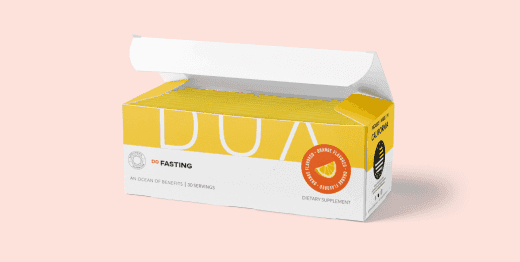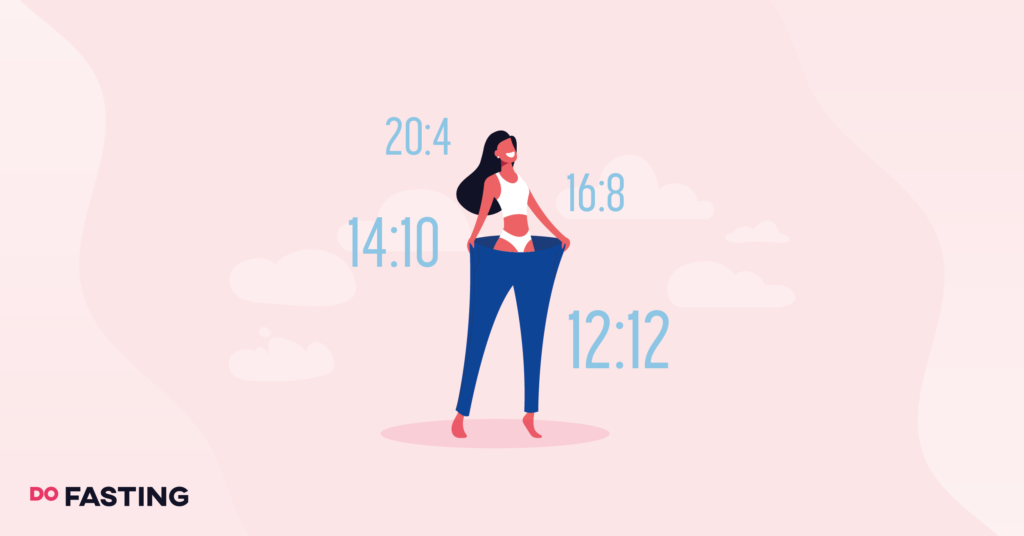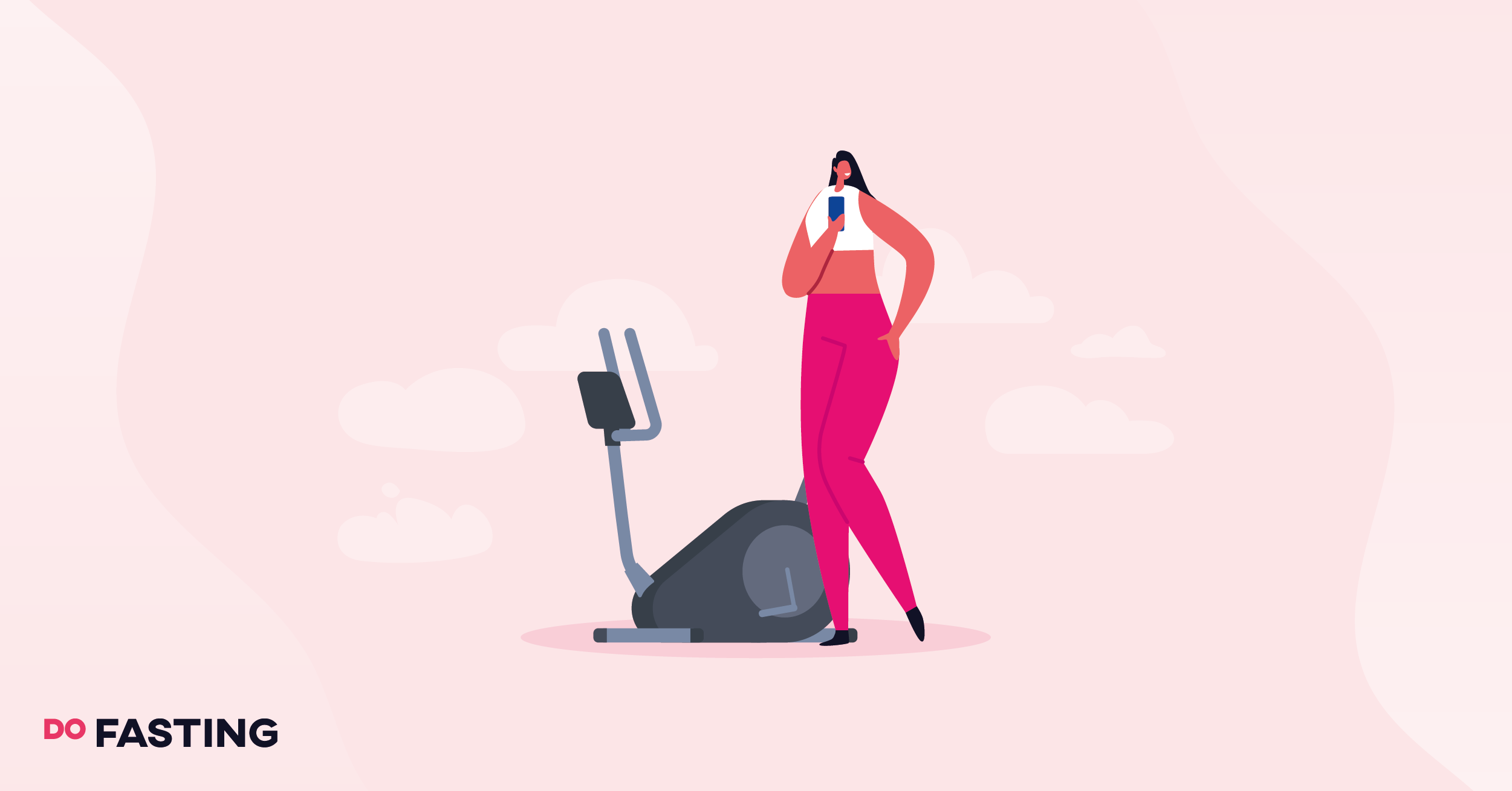Contents
What Is a Liquid Fasting Diet?
In a nutshell, a full-liquid diet refers to a fasting type that promotes having fluids instead of meals containing solid foods. These can be various smoothies, shakes, fruit juice, carbonated drinks, liquid dairy products such as milk, coffee, tea, broth, soup without chunks, and, of course, water. In some cases, you can even consume frozen yogurt and sorbet.
The goal is to eat quickly digestible foods (no solid food) and leave no undigested material in your digestive tract.
A clear liquid diet, on the other hand, has a similar premise, the only requirement is that your liquids must be transparent. As a result, milk, yogurt, and smoothies are out of the picture. You can consume clear liquids such as plain water, tea, and coffee without milk or cream, clear popsicles, and fruit juices.
You can only do this for 24 to 48 hours. It does not give enough calories and should not be followed for an extended length of time.
A liquid fast can also be recommended by your doctor before certain medical procedures, such as a colonoscopy, or if you have trouble swallowing or have missing teeth. It can provide a short relief from nausea, vomiting, or diarrhea.
In addition, if you are recovering from medical treatment, you may need to follow a liquid diet. This is because your digestive system and intestinal tract must repair after a certain procedure.
Also, you may experience nausea following general anesthesia. Hence, it’s preferable to consume only clear liquids for up to a few days following the surgery.
A liquid fasting diet is also a good way to lose weight or ease into intermittent fasting. You may find it tough to reduce calories at first entirely. Thus, consuming liquids may be a simpler strategy to reduce your caloric intake and lose a few pounds.
Liquid fasting is different from water fasting. It’s essential that you won’t mix these two diets up.
Take a
1-minute quiz
and discover how much weight you can lose with DoFasting!
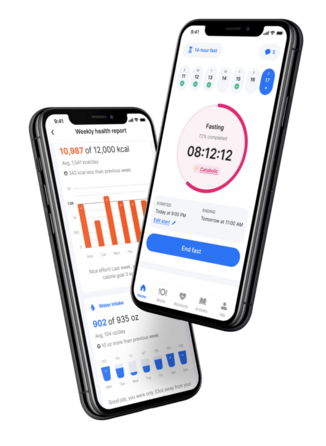
Liquid fasting vs. water fasting
Water fasting is a type of fast during which you only consume water for 24 to 72 hours. You can’t fast for longer than 72 hours, as it could get dangerous to your health.
The main differences between liquid fasting and water fasting are:
- Liquid fasting allows you to consume liquids that are not just water.
- By following a liquid fasting diet, you consume calories.
- Water fasting is more aimed at “detoxing” and weight loss, while liquid fasting is aimed at medical or health-related reasons.
However, you shouldn’t jump right into water fasting. Prepare your body for going without food by eating smaller portions or try out fasting for half of the day.
During your water fast, make sure to drink two to three liters of water a day. Besides, water fasting or intermittent fasting has many health benefits and can even prevent chronic diseases.
How to Do a Liquid Fasting Diet?
Firstly, a full liquid diet is different from a clear liquid diet. A clear liquid diet only allows you to consume clear liquids such as water, broth, or tea.
A full liquid diet consists of no solid meals and only liquids such as juices, smoothies, soups, and other drinks. It provides more nutritional value and is simpler to follow. Additionally, a liquid diet is more of a short-term fasting solution.
You can follow a liquid fast for 24 to 48 hours. If you need to go without solid food for a longer period of time, you need to be under the care of a dietitian, as it can have certain adverse effects.
The goal for most people on a full liquid diet is to consume 1,350 to 1,500 calories and 45 grams of protein per day. The diet offers you a diversity of foods. However, your doctor should provide you with dietary guidelines and a list of what you can eat and what to avoid.
What Should You Eat on a Liquid Fast?
Here is what you can consume on a liquid fasting diet:
- Water
- Tea
- Coffee
- Lemonade
- Honey
- Soup
- Gelatin
- Milk
- Pureed fruits and vegetables
- Strained or pureed soups
- Strained oatmeal
- Smoothies
- Ice cream
- Cream
- Protein drinks
- Milkshakes
- Pudding
- Popsicles
- Butter and mayonnaise
In some cases, you can also eat:
- Eggnog or baby food with eggs
- Mashed potatoes with gravy
- Pureed meat and beans
What Should You Avoid on a Liquid Fast?
You should avoid any solid foods or liquids that have chunks in them.
Examples of these foods:
- Cereal
- Soups with chunks
- Noodles
- Whole fruits and vegetables
- Cheese
- Tofu
- Solid meat or fish
- Rice
- Sweets
- Nuts and peanut butter
- Anything with seeds
- Other foods that are solid
You should also avoid drinking alcohol or getting all of your calories from sweet foods such as ice cream.
It’s important that you get enough fiber, protein, vitamins, and minerals, as well as adequate calories. If you don’t keep track of your nutrients, it might lead to some deficiencies and become unsafe even for weight loss.
Is Liquid Fasting Safe for Weight Loss?
In short — yes, liquid fasting is safe for weight loss. You allow your body to clean out undigested food, and the diet is easier to stick with than intermittent fasting since you’re still consuming calories.
Moreover, because it is more difficult to consume a larger number of calories through liquid food or drinks, you immediately lower your calorie consumption. When you consume fewer calories than you burn, you lose weight.
To specify, the total number of daily calories can range from 500 to 1.500, and studies have shown that low-calorie diets are effective for weight loss.
However, the weight loss can be a result of losing carbs and water that are stored in your muscles and liver. Hence, the weight that you lose is likely to be other components instead of fat.
Because your carbohydrate and water stores are restored, you will recover the weight you lost after you start eating normal foods again.
To avoid gaining the lost weight back or the need to always stick with a strict diet to maintain the weight, you could try intermittent fasting instead.
It’s a safer and more sustainable weight loss option since you don’t need extended fasting windows to have results. 16/8 is a type of fast in which you abstain from food completely for 16 hours and eat anything you want for 8 hours.
Your calorie consumption automatically decreases, you’re giving your digestive system a rest, inducing autophagy, and gaining a lot of health-related benefits apart from weight loss.
Furthermore, there are several varieties of intermittent fasting to choose from, and the weight reduction advantages have been scientifically confirmed.
To begin fasting, download the DoFasting app and choose your preferred fasting plan. Following that, you’ll receive personalized recommendations, as well as a fasting timer, a calorie and water consumption tracker, and much more to help you along your fasting journey.
Take a
1-minute quiz
and discover how much weight you can lose with DoFasting!

Possible Benefits of Liquid Fast
Even though liquid fasting might not be the best option for weight loss, the diet could have other potential benefits.
Better digestion
Liquids pass through your digestive system faster than solid meals. Water or apple juice, for example, leaves your stomach within 10 to 15 minutes after they were consumed.
In contrast, solid foods can stay in your stomach for a few days.
Adequate hydration is important for maintaining healthy digestion, as the body needs plenty of fluids to break down food effectively. Drinking enough water and swapping solid foods for liquids (especially clear liquid) can help to keep the digestive system functioning properly.
This can help to relieve symptoms of indigestion, such as bloating and stomach discomfort.
Hydration
A liquid-based diet can help with hydration since liquids are a source of fluid for the body. The water in those liquids is absorbed into the bloodstream, which helps to keep the body hydrated.
A liquid diet can assist in restoring lost electrolytes, which are minerals that play an important part in hydration, in addition to supplying fluid for the body. When you sweat, for example, electrolytes are lost along with water.
Electrolyte-rich beverages, such as sports drinks or coconut water, can assist in restoring lost electrolytes and keep the body hydrated.
Detoxification
There is no scientific evidence that confirms the idea that a liquid diet is effective for detoxification.
Some individuals feel that a liquid diet might clear the body of toxins and enhance general health. Liquid diet enthusiasts frequently claim that a liquid fast can help improve digestion, reduce bloating, and increase energy levels.
You consume easily digestible meals and avoid solid foods, which can also be highly processed meals, fast foods, or sweets, that way giving your body a break from processing toxic meals. As a result, while the statement may be accurate, it should be taken with a grain of salt.
Moreover, it’s important to speak with a healthcare provider before starting a liquid diet for detoxification purposes.
Risks and Drawbacks to Consider
Let’s go over some disadvantages that a liquid fast might have.
Limited research
When it comes to losing weight, changing your lifestyle habits, or trying to enhance your overall well-being, it’s important that the choices you make have been tested before. Hence, making sure that there is scientific research done on diets and topics and the effects they might possess.
Furthermore, scientific studies can help identify elements that may influence an individual’s reaction to a certain diet, such as genetics, medical history, and lifestyle factors. This can help in customizing dietary recommendations to a person’s unique needs, hence improving general health and well-being.
A liquid diet or a clear liquid diet has limited research.
Keep this in mind before starting a liquid fast.
May pose a risk for people with certain conditions
A full liquid diet may not be appropriate for everyone. It’s important to consult a healthcare provider before starting a full liquid diet, as it may not provide enough nutrients or adequate calories for some individuals, particularly if it’s followed for an extended period of time.
It can be especially risky for people with certain health conditions:
- Diabetes — dangerous for your blood glucose, blood pressure, and insulin levels.
- Irritable bowel syndrome (IBS) — the diet doesn’t provide enough fiber and nutrients, and therefore, you can experience constipation and other digestive issues.
- Eating disorders — can trigger symptoms of your condition.
- Underweight people — the diet is very low in calories and can worsen your condition.
If you have any of these conditions or chronic disorders, you should choose a different fasting approach or diet and consult your doctor before doing so.
May have short-term side effects
Liquid fasting, or consuming only liquids for a period of time, can have some side effects.
These include:
- Nutrient deficiencies — the diet is low in calories, and includes only liquid foods that do not provide the variety of nutrients that a regular diet does.
- Constipation — the diet lacks fiber which can lead to constipation.
- Dizziness and fatigue — lack of calories can make you feel dizzy or tired.
- Psychological distress — going without solid food for some time can be hard physically and mentally.
To avoid or minimize these side effects, make sure to drink plenty of water, consume liquids that are made out of fruits or vegetables, add calories if needed, and don’t follow the diet for an extended period of time.
Not a long-term solution
A liquid-only diet might not be a sustainable long-term solution for a few reasons. The diet is often low in calories and doesn’t provide a full range of nutrients for the body. Which can have adverse effects after a while.
Also, it might be too difficult to stick with the fast for a longer time and can cause psychological distress. Liquid diets do not provide a lasting solution to health issues or weight gain.
All things considered, it’s important to talk with a healthcare professional and discuss your individual needs.
Tips for Following a Liquid Fast
If you do decide to try out a liquid diet, here are some tips to make your experience the best it can be.
Get medical supervision
Medical supervision is extremely important when it comes to diets that are low in calories and nutrients and can lead to a number of health problems, such as malnutrition and dehydration. As a result, a medical professional can determine if the diet will harm or benefit your health and whether you should undertake it in the first place.
A doctor can prepare guidelines you can follow and offer liquid recommendations that you can consume throughout the day. This will ensure that you get the necessary nutrients and fluids to keep your body healthy.
Also, a medical professional can monitor your health while you follow the diet and make adjustments accordingly, providing support and guidance that’ll help you reach your goals.
Replenish electrolytes
Electrolytes play an important role in many of the body’s functions. These minerals help regulate hydration and the balance of fluids in the body. Deficiency can lead to weakness, muscle cramps, dehydration, and other problems.
You can replenish electrolytes by consuming sports drinks or other beverages that are rich in electrolytes. You can also make yourself a smoothie from fruits and vegetables such as bananas and spinach, which are high in electrolytes.
Eat your liquids more frequently than regular meals
Liquid meals contain fewer calories than regular meals with solid foods and are faster absorbed and digested. You need to consume your liquids more frequently to provide the body with a steady supply of energy and nutrition throughout the day.
To specify, you might need to eat six to eight times a day. These meals should include a variety of liquids and strained or blended foods.
Add more flavor to your liquid meals to curb cravings
Going on a liquid-only fast or a clear liquid diet can make you feel unsatisfied with your meals and make you crave certain solid foods. Adding more flavor to your soups or smoothies can help you feel satisfied for a longer period of time.
You can try to roast your veggies before blending them into a soup or a smoothie. Add cinnamon to your coffee or tea. You can also try adding ingredients with strong tastes, such as pomegranate seeds, chipotle pepper, or cilantro. However, use them in small amounts.
Take a
1-minute quiz
and discover how much weight you can lose with DoFasting!

Liquid Fasting: Final Considerations
A full-liquid fast is a type of fast where you can only consume liquids for up to only a few days. These liquids can be anything from water and juice to soups and smoothies. The diet is deficient in calories, ranging from 500 to 1.500.
A clear liquid diet, on the other hand, is a diet that allows you to consume only clear liquids. A doctor can prescribe it before or after certain medical procedures.
Even though liquid fasting might help your digestive system or lose weight, the solution isn’t long-term, and there is limited scientific evidence to back it up.
See how DoFasting will improve your life
Find out what works for you with this 60-sec quiz approved by our experts and get your personal revolutionary fasting assistant.
Start the Quiz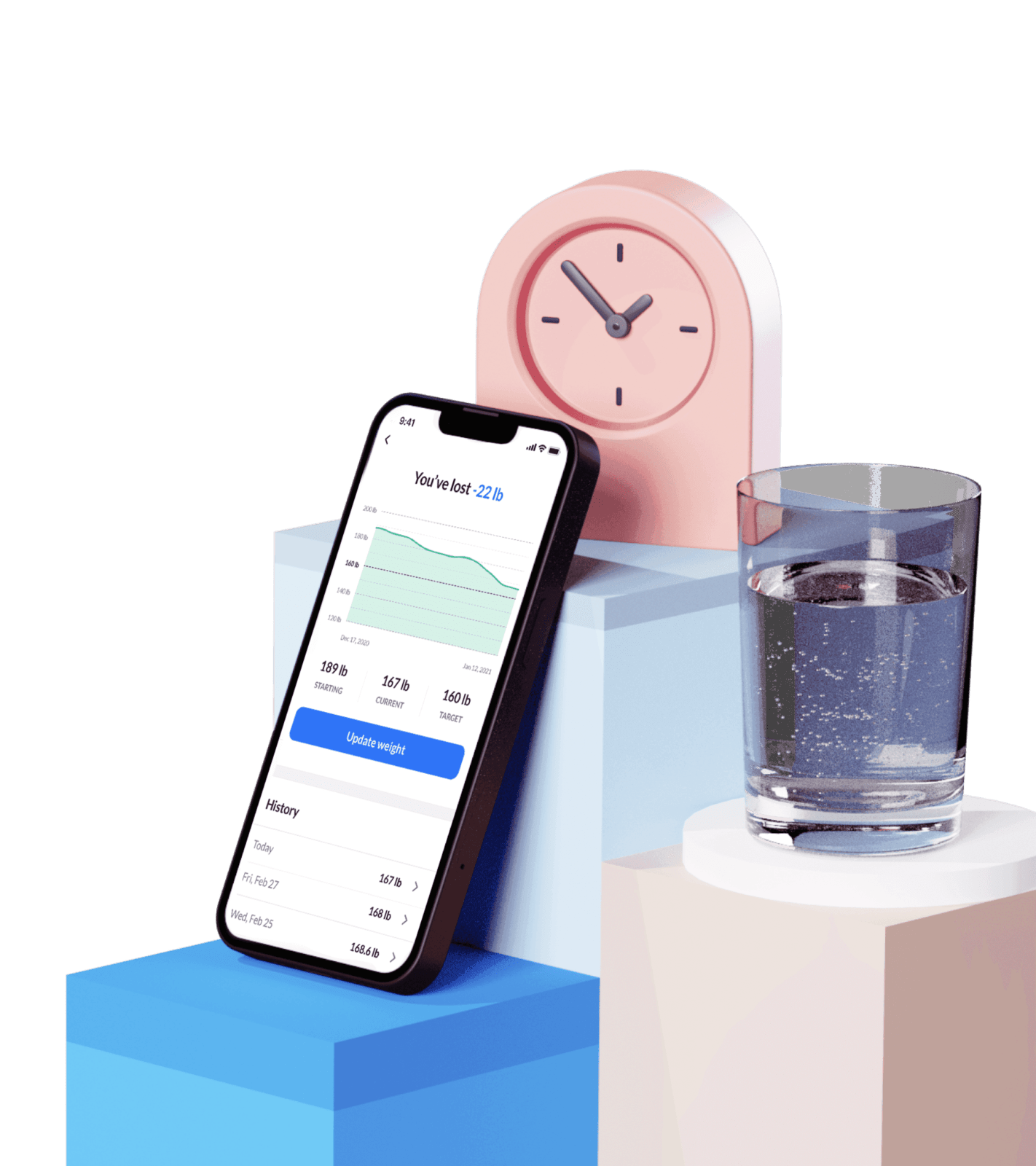
This is an evidence-based article that includes scientific citations. DoFasting’s professional writers and editors prepared the content, which a team of medical experts verified to be accurate.


